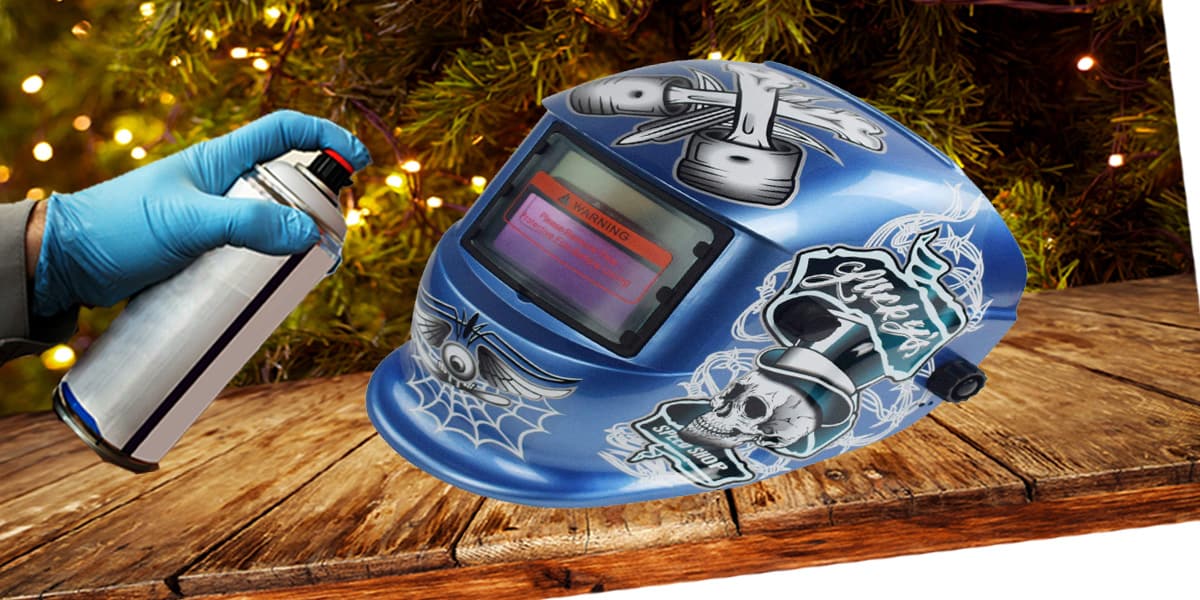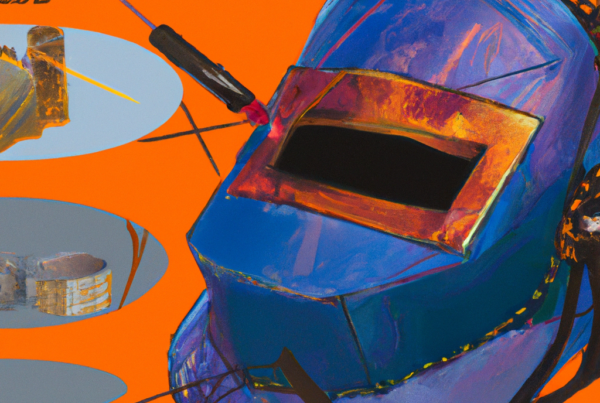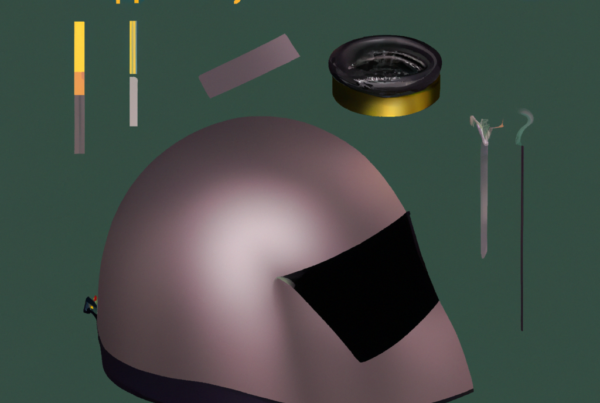Painting your welding helmet might seem complicated or crazy. But in reality, painting your welding helmet is a simple and easy process that will make your welding helmet more personal, trendy and unique. In this article, I like to show you five effortless steps on how to paint a welding helmet!
It’s no secret that welding helmets aren’t the most fashionable items on the market. After all, most quality welding helmets only come in solid black or grey. If you’re really lucky, you’ll be able to find a welding helmet that comes in a vibrant solid color, such as pink.
Painting a Welding Helmet
Although some welding helmets have designs, most of the designs tend to be tacky or childish. That’s why most welders turn to painting their welding helmets.
Gather Materials
Like any activity, you’re going to need to gather the necessary materials before you get started. So, here’s everything you’re going to need to paint your welding helmet:
- A welding helmet
- A primer that is fire resistant
- A brush or wheel
- Clear coat of fire resistant paint
- A bottle or can of fire resistant paint in the color of your choosing
It’s important to note that every liquid you use on your welding helmet in terms of primer and paint must be fire resistant. If you don’t use fire resistant products, then there is an increased risk and probability that your helmet will set on fire when you weld. Obviously, this isn’t a good situation that anyone wants to find themselves in.
Remove Instead of Taping
Traditionally, people taped the lens and headgear when they painted their welding helmets. I’m here to tell you that this is a dumb practice. While tape is effective in protecting the lens and headgear from primer and paint, it’s only semi-effective. In other words, it’s extremely easy for primer or paint to leak onto the lens or headgear. There are only two ways to avoid this: either remove the lens and headgear or don’t paint your welding helmet at all.
Of course, you’re reading this article for a reason. That being said, don’t settle for taping your welding helmet or not painting it at all. Instead, do a little bit of extra work and remove the lens and headgear. Removing the lens and headgear is easier than it seems. In reality, the lens and headgear essentially pop out when you try to remove them. Since each welding helmet is different, I advise you to read your helmet’s user manual before removing the lens and headgear because it will tell you the exact steps you should take to do so.
Prime Your Helmet
When you think you’re ready to kickstart the painting process, start by priming your helmet. This takes a few steps, so bear with me.
If you haven’t cleaned your welding helmet in a while, then you should do so. This will ensure that you’re welding helmet is in the best condition possible. You can easily clean your welding helmet in under ten minutes. Simply use a soft bristle brush to wipe all of the dust and particles off and wipe your helmet with a little bit of water and a soft cloth.
Once your welding helmet is completely dry, take a wire brush or a wheel and brush from the front to the back of your welding helmet. This will eliminate any extra dust, dirt, or other particles that might be stuck to your welding helmet. This process also helps smooth out any paint or glossiness that might already be on your welding helmet.
After cleaning your welding helmet to the best of your abilities, cover your helmet with a fire resistant primer. Although some people say a primer is unnecessary, I’m a firm believer that a primer keeps your welding helmet in good condition and makes the paint last longer.
Paint Your Helmet
Yay! You finally made it to the most fun step in the process of painting your welding helmet! While you can use liquid paint that comes in a jar or bottle, fire resistant spray paint is the easiest way to paint your welding helmet.
Start painting your welding helmet by applying a clear coat onto your welding helmet. This clear coat could even be a neutral color, such as white, which makes it easier to apply your chosen color. It’s important to note that if you decide to add a clear or neutral coat to your welding helmet, you must wait until that coat is dry to paint with your other color.
Once you’re ready to paint with your chosen color, simply dip your brush into the paint and apply it with small, delicate, and smooth strokes, or spray paint with small, delicate, smooth vertical motions. Regardless of the type of paint you use, it’s important to use delicacy and caution when you’re painting your welding helmet.
Also, make sure you paint in the same direction. Overall, your technique should be delicate and soft because it will make the color turn out nicer. If you’re really feeling artsy, you could even paint a pattern or design on your welding helmet! This would make your welding helmet truly stand out.
Let it Dry
Once you’ve covered the entire external shell of the welding helmet with paint, let it dry. It’s important to let the paint sit for many hours, even if you anticipate on doing a second or third coat. The longer you let it dry, the nicer the helmet will look. It’s also important to note that you should not use your welding helmet until it’s completely dry.
Overall, painting your welding helmet is a fun and creative activity that will personalize and stylize your welding helmet. Although painting a welding helmet is super easy, there are a few things you should keep in mind, such as:
- Only use fire resistant products.
- Make sure to clean your welding helmet extremely well prior to paining.
- Use a primer to ensure the paint sticks to your welding helmet for a long time.
- Remove the lens and headgear instead of taping them.
- Use a smooth and delicate technique.
So, what are you waiting for? Customize your welding helmet today!




